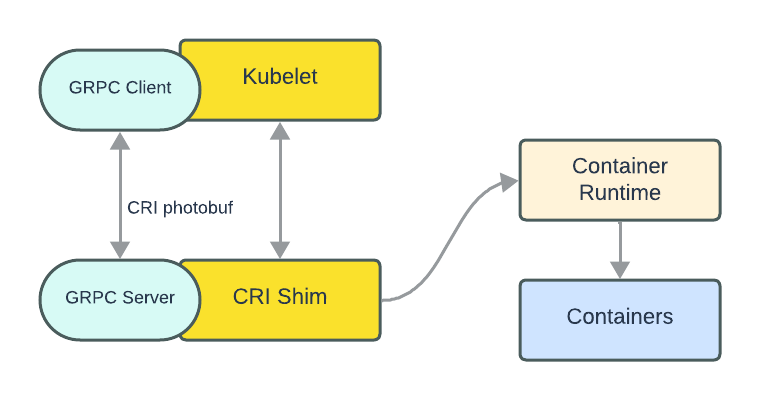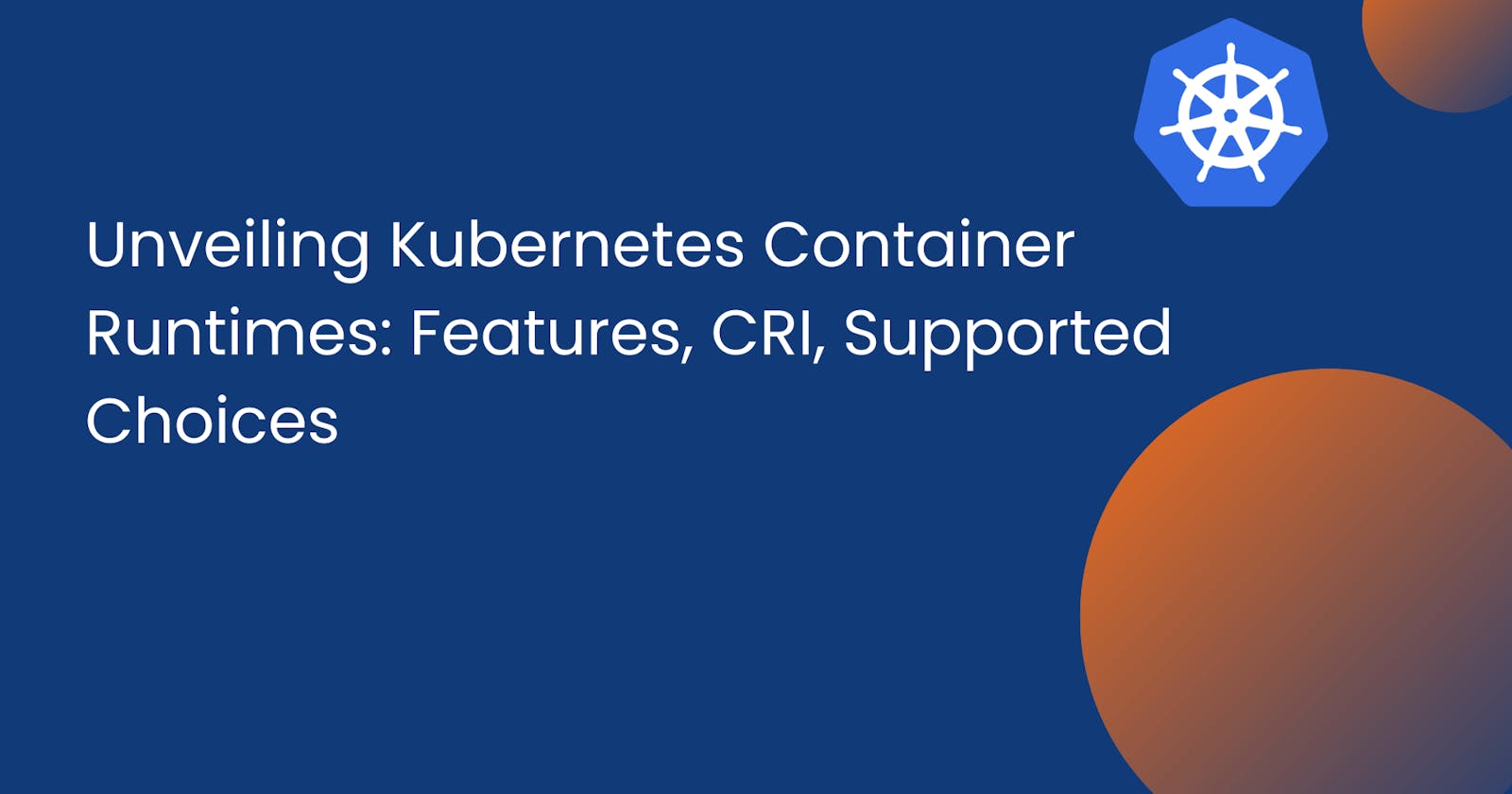Introduction:
Container orchestration solutions, such as Kubernetes, rely on container runtimes to efficiently manage and execute containers. The Container Runtime Interface (CRI) is critical in allowing Kubernetes and these runtimes to communicate seamlessly. In this post, we'll look at the importance of CRI, its essential components, and how it improves the functioning of container runtimes in the Kubernetes ecosystem.
Understanding Container Runtimes:
Before we go into CRI, let's go over the concept of container runtimes again. Container runtimes are software components that execute and manage containers on individual Kubernetes cluster nodes. They perform responsibilities including container launch, container image management, and communicating with the underlying host operating system.
Key Features of Container Runtimes:
Node-Level Container Management:
Container runtimes manage container images on each node in the cluster.
Pods, the smallest deployable units in Kubernetes, run on and are managed by the container runtimes.
Pod Lifecycle Management:
- Container runtimes are responsible for the lifecycle of pods, ensuring proper initialization, execution, and termination.
Communication with Kubernetes Components:
- Container runtimes communicate with Kubernetes components, such as the Kubelet, to orchestrate containerized applications effectively.
Container Runtime Interface (CRI):
The Container Runtime Interface (CRI) is a set of APIs and tools that standardise the interface between container runtimes and Kubernetes. Its primary purpose is to provide a consistent and well-defined interface that allows Kubernetes to effortlessly connect with diverse container runtimes without being strongly linked to any one implementation.
Key Components of CRI:
Kubelet:
The primary node agent in Kubernetes is responsible for managing containers on a node.
Hosts a gRPC client that connects to the gRPC server present in the CRI shim.
CRI Shim:
An intermediary component between the Kubelet and the container runtime.
Provides a gRPC server that adheres to the CRI specifications, allowing communication with the container runtime.
Container Runtime:
The actual software is responsible for executing and managing containers on the node.
Communicates with the Kubelet and CRI shim to fulfill container-related tasks.
Containers:
- The entities that represent individual containers that the container runtime manages.

In this diagram, Components include Kublet, CRI shim, Container runtime, and Containers.
The Kubelet communicates with the container runtime through the CRI shim using gRPC calls, enabling interaction following CRI specifications.
Once communication is enabled, you will have container Runtime, which will manage containers.
Container runtime's objective is to facilitate communication with Kubernetes, using Kublet as the intermediary.
Interaction Between Kubernetes and CRI:

Kubelet initiates communication, invoking the Container Runtime Interface.
Container Image Builder and Container Storage Library will be used by the CRI-O daemon to pull container images and manage them on disk.
Runc starts container processes and instructs the Linux kernel to initiate processes in the appropriate namespace, cgroup, and context.
Container Runtime Interface Advantages:
Flexibility:
- Allows Kubernetes to support multiple container runtimes, giving users the freedom to select the runtime that best meets their needs.
Standardization:
- Ensures a standardized communication interface between Kubernetes and container runtimes, enabling compatibility and interoperability.
Isolation:
- Enhances the isolation between the container runtime and Kubernetes components, reducing the risk of compatibility issues.
Supported Container Runtimes in Kubernetes:
-
Widely known and popular container runtime.
Frequently used in production Kubernetes environments.
-
Available as a daemon for Linux and Windows.
Manages the complete container lifecycle on the host system.
Rkt:
An application container engine designed for production cloud-native environments.
Offers an alternative to Docker for running containers.
Lxd:
Next-generation system container manager.
Provides a user experience similar to virtual machines but using Linux containers.
Conclusion:
Understanding container runtimes, the Container Runtime Interface, and the various Kubernetes runtimes is critical for optimizing containerized applications. Kubernetes users can select the runtime that best meets their individual use cases and requirements, with Docker, Containerd, Rkt, and Lxd among the available runtimes.

